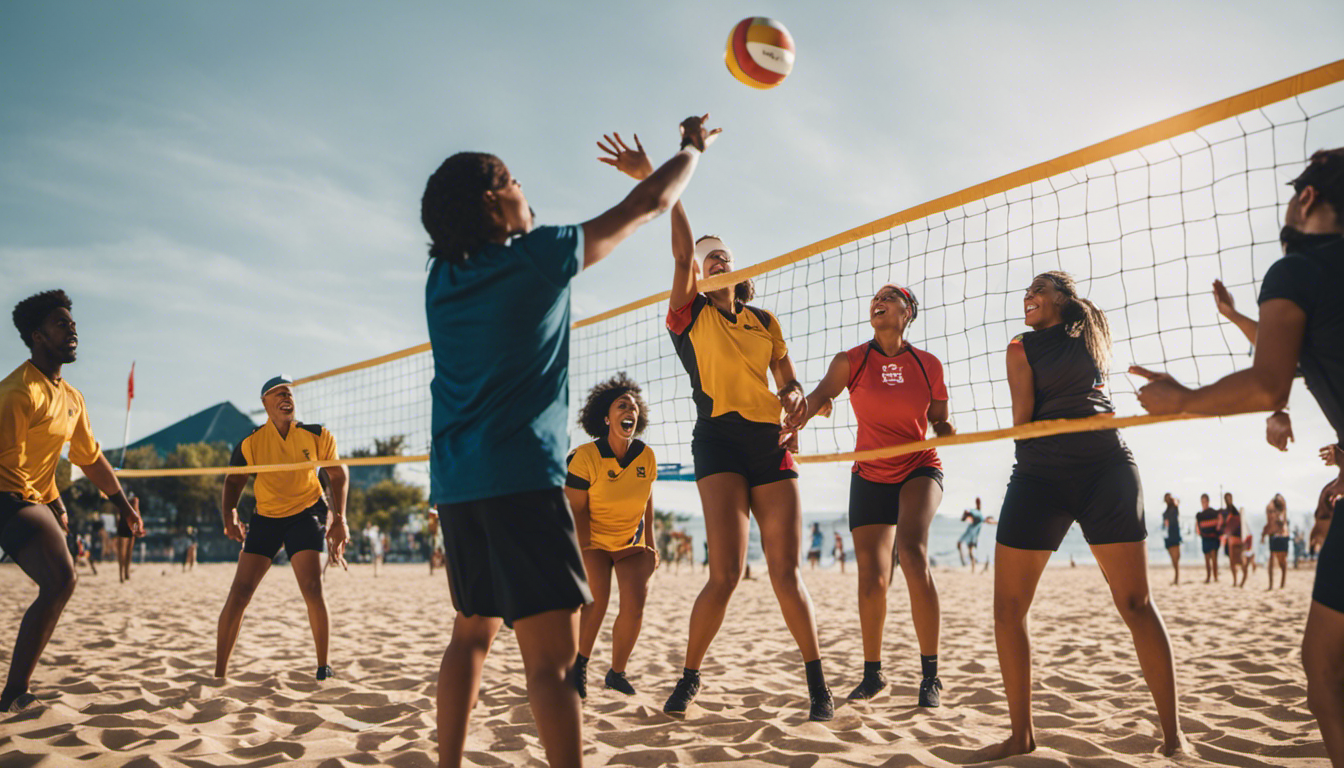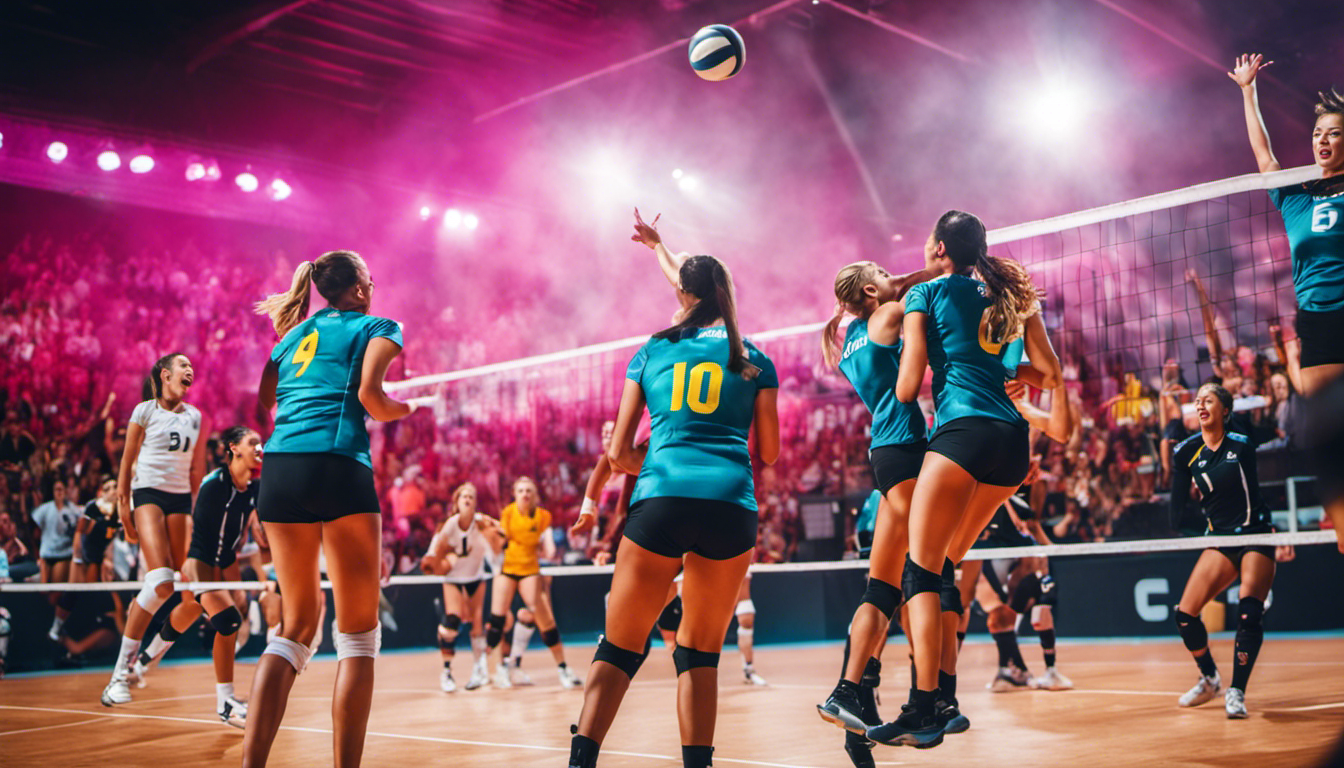I’ve had the privilege of playing volleyball with individuals of all abilities and ages, and let me tell you, it’s an incredible experience. In this article, we’ll explore the benefits of inclusive volleyball and discuss strategies for adapting the game to cater to different abilities.
We’ll also delve into tips for playing with mixed age groups and creating a truly inclusive volleyball community. Additionally, we’ll provide valuable insights on teaching volleyball to individuals with disabilities and modifying rules to ensure fairness for all players.
Get ready to embrace the spirit of teamwork and sportsmanship in ‘Volleyball for All: Playing With Different Abilities and Ages.’
Key Takeaways
- Inclusive volleyball promotes social interaction and fosters a sense of community and teamwork.
- Adapting the rules, equipment, and coaching techniques can make volleyball more inclusive for players of all abilities.
- Strategies for playing with mixed age groups include communication, balanced teams, mentorship, and adapting strategies.
- Creating an inclusive volleyball community involves emphasizing teamwork, equal opportunities, mutual respect, and celebrating diversity.
The Benefits of Inclusive Volleyball
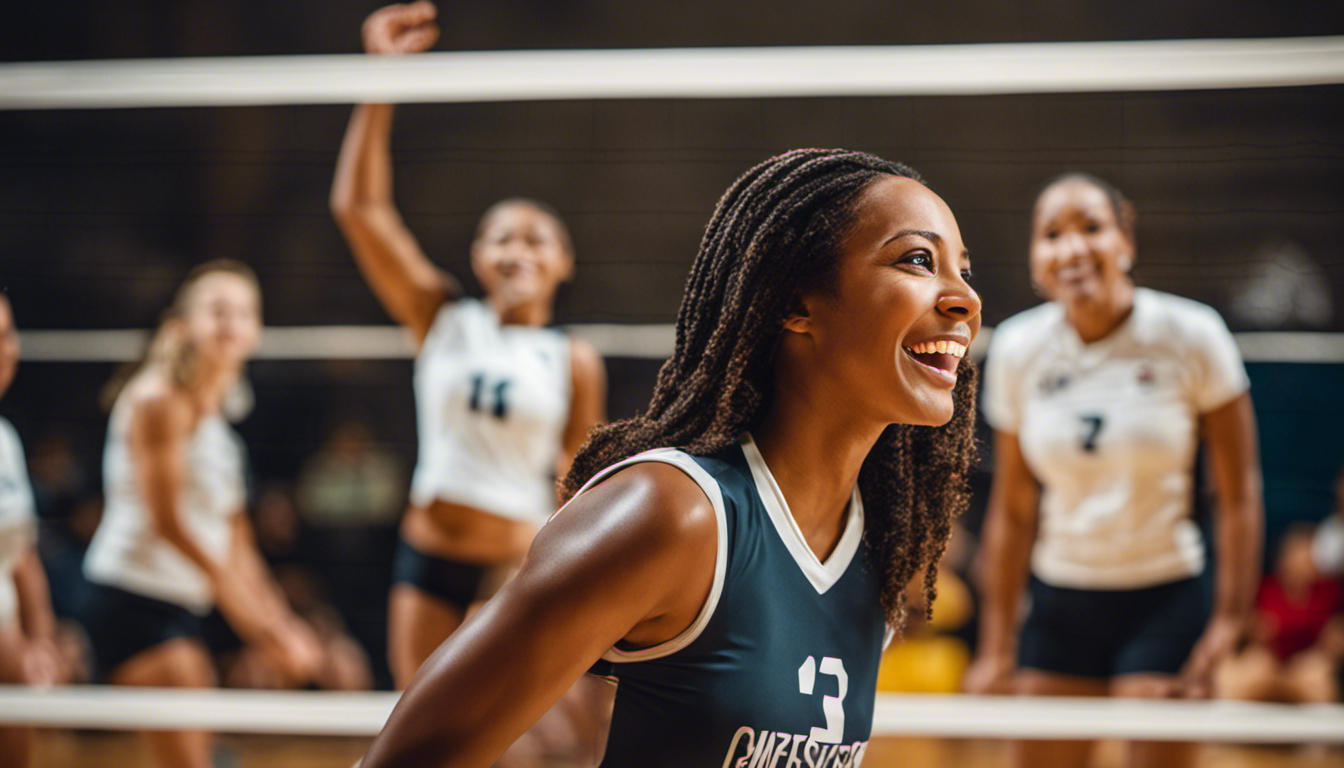
There’s a multitude of benefits to playing inclusive volleyball, regardless of age or ability.
Inclusive volleyball programs are designed to create an environment where people of all ages and abilities can come together and enjoy the sport.
One of the key benefits is promoting social interaction in volleyball. Through inclusive programs, players have the opportunity to interact with individuals from different backgrounds and skill levels. This fosters a sense of community and encourages teamwork on the court.
Regardless of our differences, we all share a common love for the game, and inclusive volleyball allows us to come together as a team, supporting each other both on and off the court.
It’s truly rewarding to see how this shared passion for volleyball can bridge gaps and build lasting friendships among players of diverse abilities and ages.
Adapting Volleyball for Different Abilities
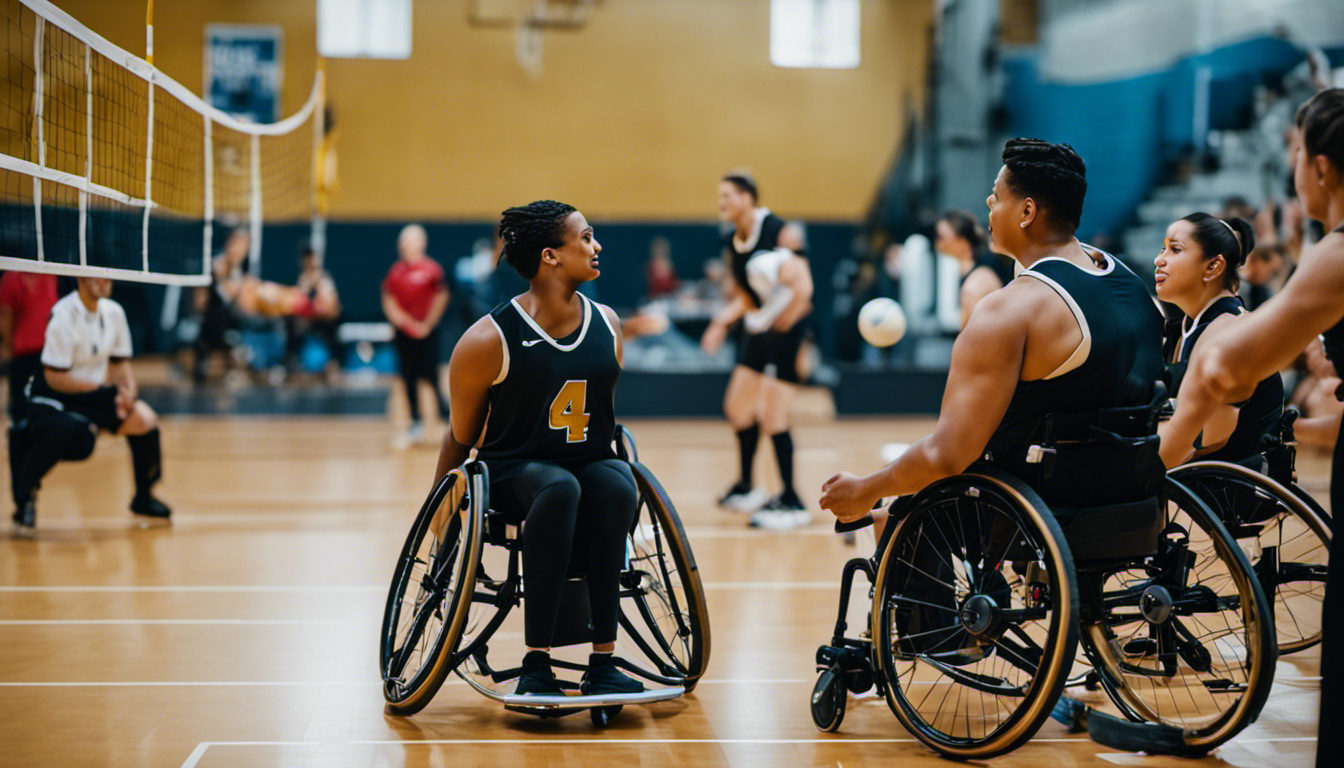
As a seasoned volleyball coach, I’ve encountered numerous players with different abilities and ages.
In order to create an inclusive environment, I’ve learned the importance of making modifications to the game of volleyball.
Inclusive Volleyball Modifications
You can modify the rules and equipment to make volleyball more inclusive for players of different abilities and ages.
As an experienced coach, I have found that incorporating adaptive equipment and inclusive coaching techniques can greatly enhance the playing experience for all participants.
Adaptive equipment, such as softer balls or larger nets, can be used to accommodate individuals with physical limitations or disabilities.
Additionally, implementing inclusive coaching techniques, such as breaking down skills into smaller steps or providing visual aids, can help players of all ages and abilities understand and participate in the game effectively.
It is important to create an environment where everyone feels valued and included, regardless of their skill level or age.
Tailoring Volleyball for All
To make volleyball more inclusive, I believe it is crucial to tailor the rules and equipment to cater to a diverse range of players. By doing so, we can ensure that everyone has the opportunity to enjoy and participate in this wonderful sport. Inclusive coaching techniques play a vital role in creating an environment where players of all abilities and ages feel welcome and supported. The use of adaptive equipment, such as lower nets or softer balls, can also help level the playing field and accommodate different skill levels. Additionally, modifying rules to allow for variations in gameplay can enhance inclusivity. Together, these adjustments promote equal opportunities for all individuals to engage in volleyball and foster a sense of belonging within the sport.
Table: Volleyball Modifications
| Rule Modification | Equipment Adaptation | Coaching Technique |
|---|---|---|
| Varying net height | Softer balls | Positive reinforcement |
| Adjusted court size | Lower nets | Individualized instruction |
| Flexible team sizes | Lightweight equipment | Clear communication |
| Modified scoring system | Adaptive uniforms | Encouraging teamwork |
Strategies for Playing With Mixed Age Groups
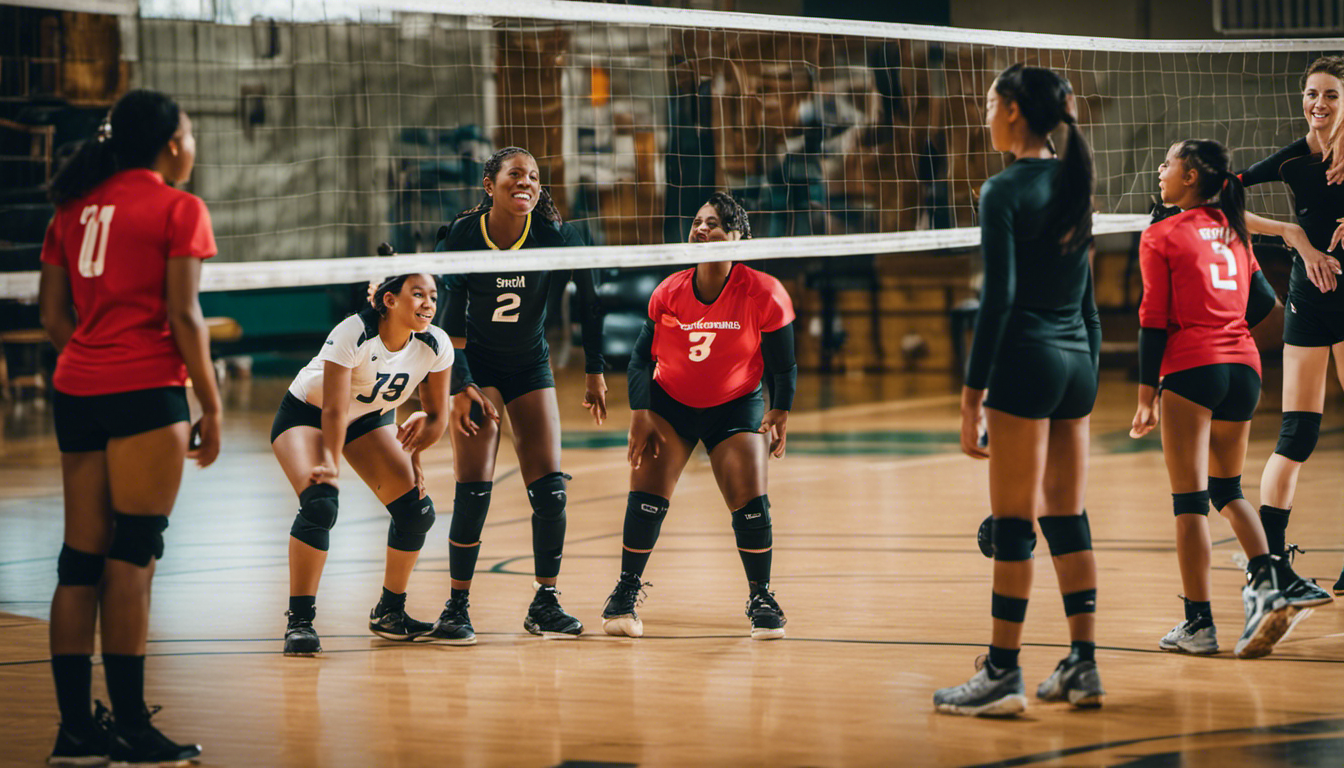
When playing volleyball with mixed age groups, it’s important to adapt your strategies to accommodate different abilities and ages. Age group dynamics and skill level integration are crucial factors to consider in order to create an inclusive and enjoyable environment for everyone on the court.
One effective strategy is to focus on communication and teamwork. Encourage players of all ages to communicate with each other, providing clear instructions and support during the game. This not only helps build camaraderie but also ensures that everyone feels involved and valued.
Additionally, integrating different skill levels can be achieved by creating balanced teams. Mix experienced players with beginners, assigning mentors who can guide and assist the less skilled individuals. This promotes learning opportunities while fostering cooperation between players of various abilities.
Creating an Inclusive Volleyball Community
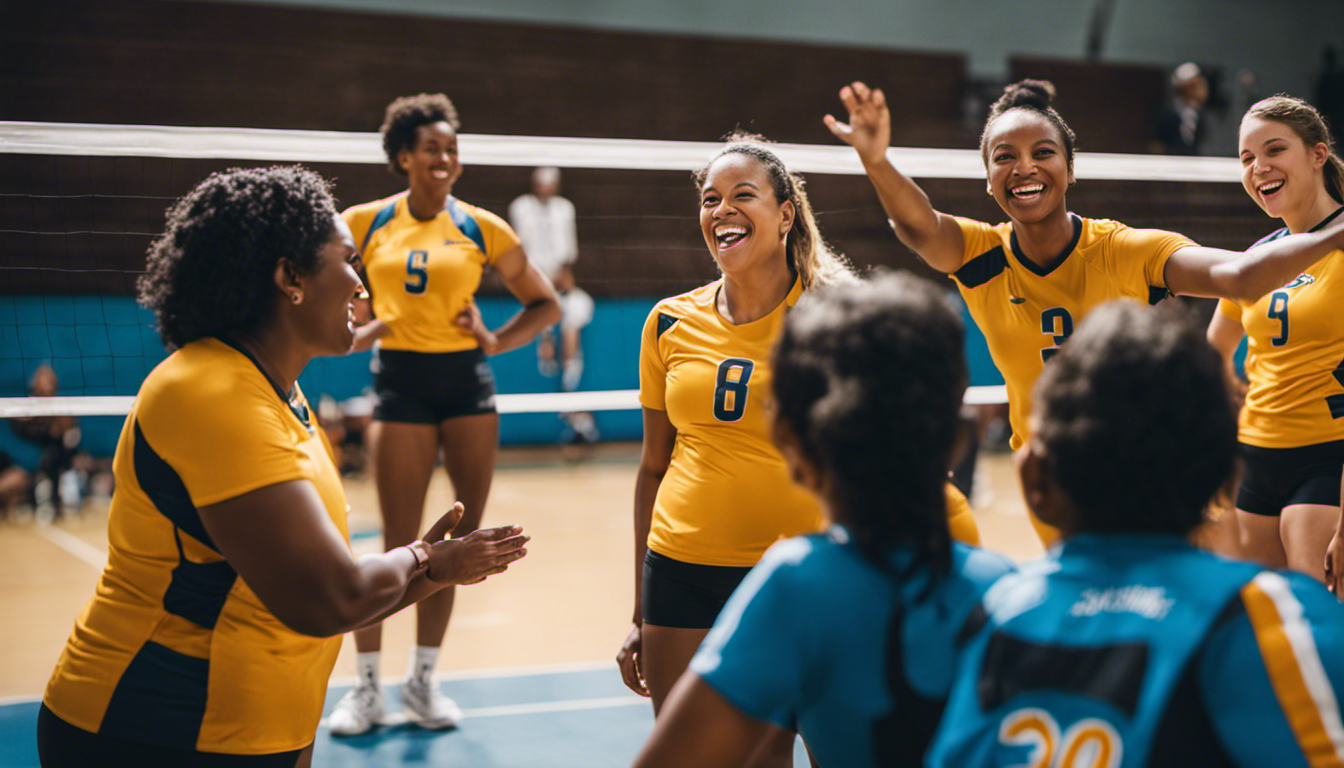
Creating an inclusive volleyball community involves fostering a positive atmosphere where players of various ages and skill levels feel welcome and valued. As someone who has been involved in organizing inclusive volleyball events and building an inclusive volleyball team, I can confidently share some key strategies to achieve this goal:
-
Emphasize teamwork: Encourage collaboration and support among players, regardless of their abilities or age.
-
Provide equal opportunities: Ensure that all players have the chance to participate and contribute to the game.
-
Promote mutual respect: Foster an environment where everyone is treated with dignity and respect, regardless of their skill level or age.
-
Celebrate diversity: Embrace the unique strengths and qualities that each individual brings to the team, creating a rich tapestry of talent.
Tips for Teaching Volleyball to Individuals With Disabilities
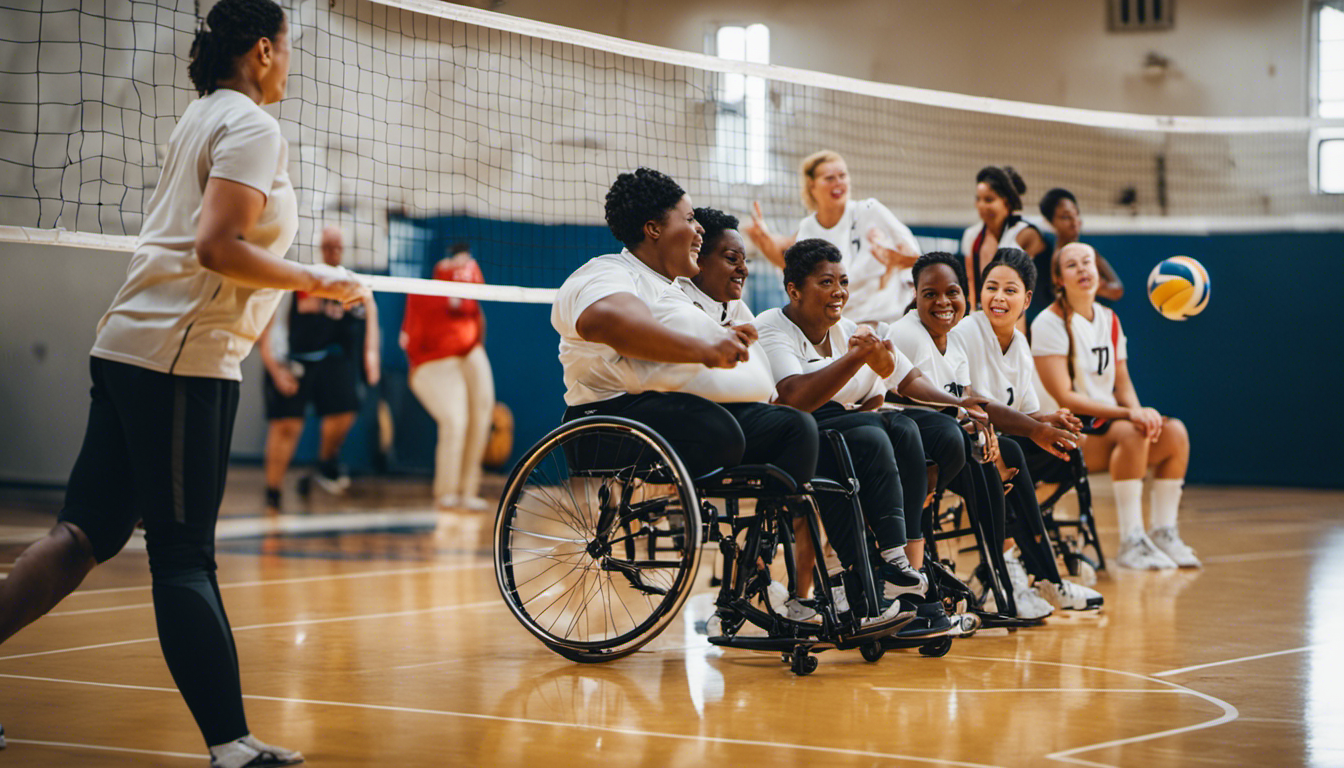
Encourage open communication and adaptability to meet the unique needs of individuals with disabilities, ensuring an inclusive learning environment.
When teaching volleyball to individuals with disabilities, it is essential to employ effective teaching techniques and make necessary equipment modifications.
As a knowledgeable and experienced instructor, I have found that breaking down each skill into smaller steps helps participants grasp the fundamentals more easily. Additionally, using visual aids such as diagrams or videos can enhance understanding.
It is crucial to modify equipment based on individual abilities, whether it’s using softer balls for those with limited hand strength or providing wheelchair-accessible courts for players with mobility impairments.
How to Modify Volleyball Rules for All Abilities
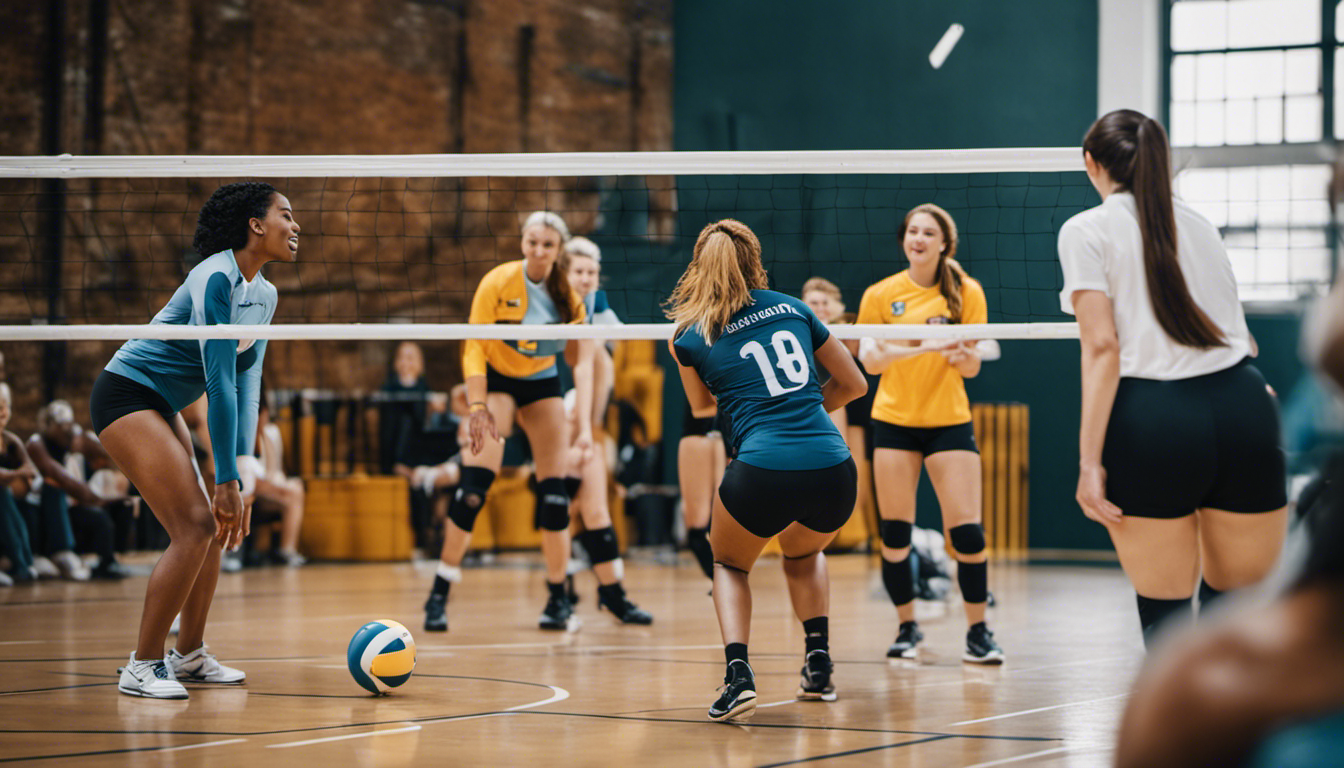
As someone who’s been involved in teaching and coaching volleyball for individuals with disabilities, I understand the importance of creating inclusive rule adaptations to ensure fair participation.
Modifying volleyball rules isn’t about lowering standards or making things easier. It’s about providing equal opportunities for all athletes to be actively engaged in the game.
Inclusive Rule Adaptations
You can modify the rules to make volleyball inclusive for players of different abilities and ages. By adapting equipment and implementing inclusive coaching techniques, everyone can participate and enjoy the game.
Here are some ways to create an inclusive environment:
- Use a lighter ball or a larger one with reduced bounce to accommodate players with limited strength or mobility.
- Lower the net height to make it easier for younger or shorter players to reach.
- Allow for more lenient serving rules, such as underhand serves, to give beginners a chance to get involved.
- Encourage teamwork and communication by implementing cooperative play strategies instead of strict competition.
These adaptations ensure that everyone can actively contribute and feel included in the game of volleyball.
With these modifications, players of all abilities and ages can engage in a fun and fulfilling experience on the court.
Ensuring Fair Participation
To ensure fair participation, it’s important to implement rules and adaptations that accommodate players of varying strengths and mobility. Promoting equal opportunities in volleyball requires a deep understanding of the unique challenges faced by individuals with different abilities and ages. As someone who has been involved in the sport for many years, I have witnessed firsthand the positive impact that adapting equipment can have on inclusivity.
By modifying equipment such as nets, balls, and court dimensions, we can create an environment where everyone can participate fully. For example, raising or lowering the net height allows players with limited mobility to engage in the game without feeling disadvantaged. Additionally, using softer balls or introducing larger targets can help individuals with physical limitations feel more comfortable while playing.
Adapting equipment not only promotes equal opportunities but also enhances the overall experience for all participants. It demonstrates our commitment to inclusivity and creates a welcoming atmosphere where everyone feels valued and empowered.
Promoting Fairness and Sportsmanship in Volleyball Games
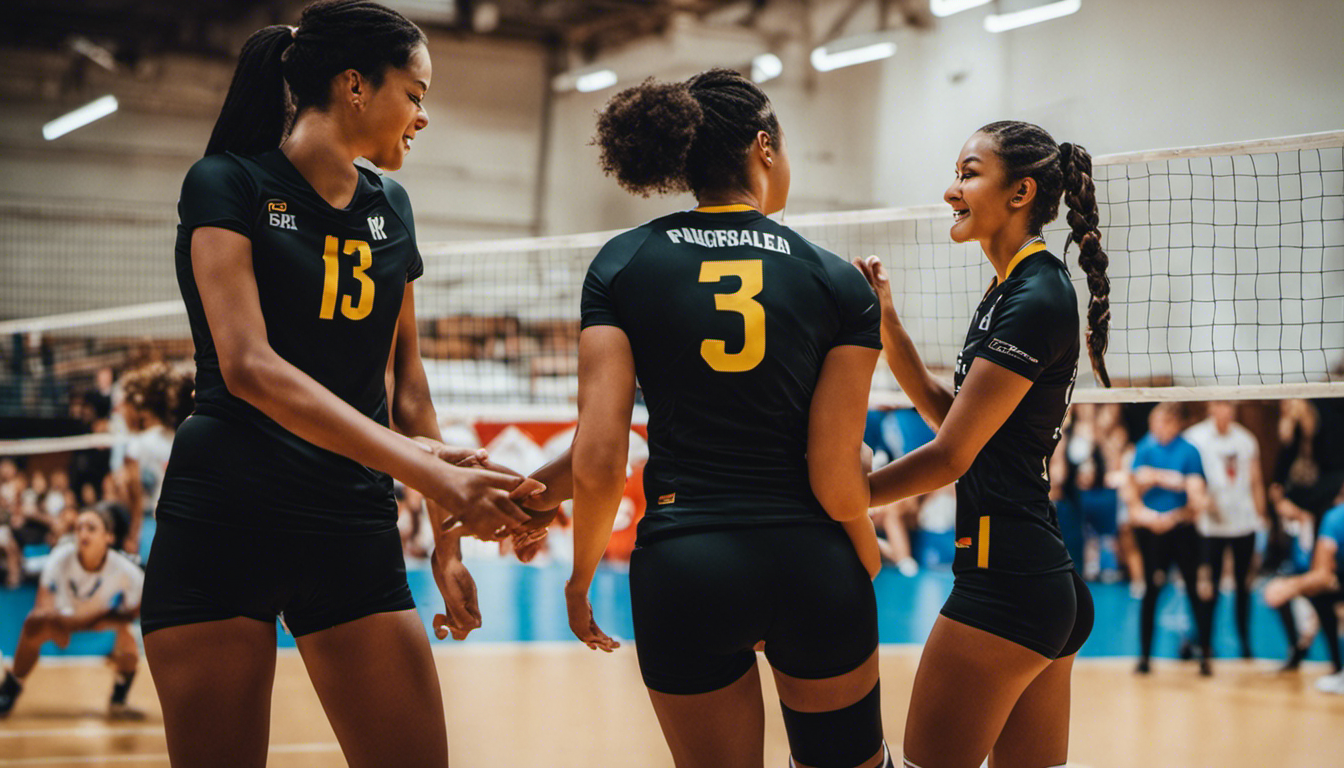
When playing volleyball games with different abilities and ages, it’s important to promote fairness and sportsmanship. As someone who has been involved in volleyball for many years, I understand the significance of creating an inclusive and supportive environment for all players.
Here are a few key ways to promote fairness and sportsmanship in these types of games:
- Implement a fair team selection process that takes into consideration each player’s skill level and experience.
- Encourage communication and collaboration among teammates to ensure everyone feels included and valued.
- Emphasize the importance of respecting opponents by discouraging any form of unsportsmanlike behavior.
- Provide constructive feedback and support to help players improve their skills while maintaining a positive atmosphere.
Frequently Asked Questions
What Are Some Benefits of Inclusive Volleyball for Individuals With Disabilities?
Inclusive volleyball offers numerous benefits for individuals with disabilities. Adaptive equipment and modified rules allow everyone to participate, fostering inclusivity, teamwork, and personal growth. It’s an empowering experience that promotes physical activity and social interaction.
How Can Volleyball Be Adapted for Individuals With Different Abilities?
To adapt volleyball for individuals with different abilities, we can utilize adapted techniques such as modified equipment, simplified rules, and inclusive sports programs. This allows everyone to participate and enjoy the game together.
What Are Some Strategies for Playing Volleyball With Mixed Age Groups?
When playing volleyball with mixed age groups, strategies for intergenerational bonding and skill level adaptation are essential. It’s important to create a inclusive environment where everyone feels valued and included in the game.
How Can an Inclusive Volleyball Community Be Created?
Creating a welcoming environment is crucial in building an inclusive volleyball community. By promoting teamwork and communication, we can foster a sense of belonging for players of all abilities and ages.
What Are Some Tips for Teaching Volleyball to Individuals With Disabilities?
When teaching volleyball to individuals with disabilities, it’s important to use adaptive techniques and modified equipment. By making the game accessible and inclusive, we can create a fun and engaging experience for everyone involved.
Conclusion
In conclusion, playing volleyball with different abilities and ages can be a rewarding and inclusive experience. By adapting the game to accommodate various skill levels and modifying rules to ensure fairness, we can create a welcoming environment for everyone.
Teaching volleyball to individuals with disabilities requires patience, understanding, and creativity. By promoting sportsmanship and fostering a sense of community, we can build an inclusive volleyball culture that celebrates diversity.
So let’s grab a ball, gather our friends of all abilities and ages, and enjoy the camaraderie that comes with playing this wonderful sport together.
